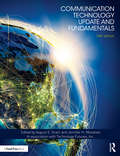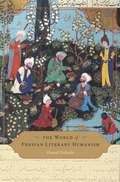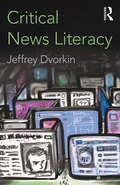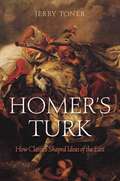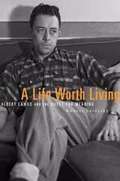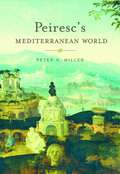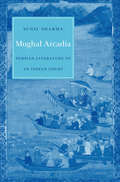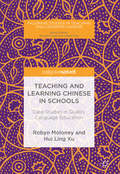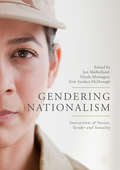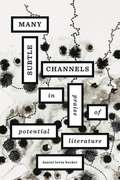- Table View
- List View
Communication Technology Update and Fundamentals: 16th Edition
by August E. Grant Jennifer H. MeadowsFor three decades, Communication Technology Update and Fundamentals has set the standard as the single best resource for students and professionals looking to brush up on how communication technologies have developed, grown, and converged, as well as what’s in store for the future. The secret to the longevity is simple—every two years, the book is completely rewritten to ensure that it contains the latest developments in mass media, computers, consumer electronics, networking, and telephony. Plus, the book includes the Fundamentals: the first five chapters explain the communication technology ecosystem, the history, structure, and regulations. The chapters are written by experts who provide snapshots of the state of each individual field. Together, these updates provide a broad overview of these industries, as well as the role communication technologies play in our everyday lives. In addition to substantial updates to each chapter, the 16th edition includes: First-ever chapters on Virtual/Augmented Reality and eSports. Updated user data in every chapter. Overview of industry structure, including recent and proposed mergers and acquisitions Suggestions on how to get a job working with the technologies discussed. The companion website, www.tfi.com/ctu, offers updated information on the technologies covered in this text, as well as links to other resources.
Race and Reunion: The Civil War In American Memory (Belknap Press Ser.)
by David W. BlightNo historical event has left as deep an imprint on America's collective memory as the Civil War. In the war's aftermath, Americans had to embrace and cast off a traumatic past. David Blight explores the perilous path of remembering and forgetting, and reveals its tragic costs to race relations and America's national reunion.
Ugly Feelings
by Sianne NgaiNgai mobilizes the aesthetics of unprestigious negative affects such as irritation, envy, and disgust to investigate not only ideological and representational dilemmas in literature--with a particular focus on those inflected by gender and race--but also blind spots in contemporary literary and cultural criticism. Her work maps a major intersection of literary studies, media and cultural studies, feminist studies, and aesthetic theory.
An Anatomy of Chinese: Rhythm, Metaphor, Politics
by Perry LinkRhythms, conceptual metaphors, and political language convey meanings of which Chinese speakers themselves may not be aware. Link’s Anatomy of Chinese contributes to the debate over whether language shapes thought or vice versa, and its comparison of English with Chinese lends support to theories that locate the origins of language in the brain.
The World of Persian Literary Humanism
by Hamid DabashiHumanism has mostly considered the question “What does it mean to be human?” from a Western perspective. Dabashi asks it anew from a non-European perspective, in a groundbreaking study of 1,400 years of Persian literary humanism. He presents the unfolding of this vast tradition as the creative and subversive subconscious of Islamic civilization.
Critical News Literacy
by Jeffrey DvorkinIn an era of "fake news" and a seemingly insurmountable influx of data on the Internet, it is critical for both journalists and citizens to understand the digital media we consume daily. This introductory textbook gives students the tools they need to think critically about the news, and to see reliable news as an essential aspect of what it means to be an informed citizen in a democracy. After reading this text, students will be able to:? Analyze key elements of news reports by weighing evidence, evaluating sources, noting context and transparency to judge reliability. Distinguish among journalism, informed opinion and unsupported opinions. Identify and distinguish between news media bias and audience bias. Use examples from the daily news media to show critical thinking about civic engagement. Develop a skeptical and engaged approach to social media and digital technology.
Lu Xun's Revolution: Writing In A Time Of Violence
by Gloria DaviesRecognized as modern China’s preeminent man of letters, Lu Xun (1881–1936) is revered as the nation’s conscience, a writer comparable to Shakespeare or Tolstoy. Gloria Davies’s vivid portrait gives readers a better sense of this influential author by situating the man Mao Zedong hailed as “the sage of modern China” in his turbulent time and place.
Homer's Turk: How Classics Shaped Ideas Of The East
by Jerry TonerSpanning the Crusades, the Indian Raj, and the postwar decline of the British Empire, Homer’s Turk illuminates how English writers of all eras have relied on Greek and Roman literature to help them understand the world once called “the Orient.” Even today, the Classics frame the West’s relationship with the Islamic world, India, and China.
The Lyric in the Age of the Brain
by Nikki SkillmanScience has transformed understandings of the mind, supplying physiological explanations for what once seemed transcendental. Nikki Skillman shows how lyric poets—caught between a reductive scientific view and naïve literary metaphors—struggled to articulate a vision of consciousness that was both scientifically informed and poetically truthful.
A Life Worth Living: Albert Camus And The Quest For Meaning
by Robert ZaretskyExploring themes that preoccupied Albert Camus--absurdity, silence, revolt, fidelity, and moderation--Robert Zaretsky portrays a moralist who refused to be fooled by the nobler names we assign to our actions, and who pushed himself, and those about him, to challenge the status quo. For Camus, rebellion against injustice is the human condition.
Thomas Hardy: Half A Londoner
by Mark FordBecause Thomas Hardy’s poetry and fiction are so closely associated with Wessex, it is easy to forget that he was, in his own words, half a Londoner, moving between country and capital throughout his life. This self-division, Mark Ford says, can be traced not only in works explicitly set in London but in his most regionally circumscribed novels.
Peiresc's Mediterranean World
by Peter N. MillerNicolas Fabri de Peiresc was the most gifted French intellectual in the generation between Montaigne and Descartes. His insatiable curiosity poured forth in thousands of letters that traveled the Mediterranean, seeking knowledge. Mining his 70,000-page archive, Peter N. Miller recovers a lost Mediterranean world of the early seventeenth century.
The Story of Alice: Lewis Carroll And The Secret History Of Wonderland
by Robert Douglas-FairhurstRobert Douglas-Fairhurst illuminates two entangled lives: the Oxford mathematician Charles Dodgson (Lewis Carroll) and Alice Liddell, the child for whom he invented the Alice stories. This relationship influenced Carroll’s imaginative creation of Wonderland—a sheltered world apart during the stormy transition from the Victorian to the modern era.
Letters of Light: Arabic Script in Calligraphy, Print, and Digital Design
by J. R. OsbornArabic script is one of the world’s most widely used writing systems, for Arabic and non-Arabic languages alike. J. R. Osborn traces its evolution from the earliest inscriptions to digital fonts, from calligraphy to print and beyond. Students of communication, contemporary practitioners, and historians will find this narrative enlightening.
The Classical Debt: Greek Antiquity in an Era of Austerity
by Johanna Hanink“Greek debt” means one thing to the country’s creditors. But for millions who prize culture over capital, it means the symbolic debt we owe Greece for democracy, philosophy, mathematics, and fine art. Johanna Hanink shows that our idealized image of ancient Greece dangerously shapes our view of the country’s economic hardship and refugee crisis.
Mughal Arcadia: Persian Literature in an Indian Court
by Sunil SharmaMughal rulers were legendary connoisseurs of the arts, whose patronage attracted poets, artists, and scholars from all parts of the world. Sunil Sharma explores the rise and decline of Persian court poetry in India and the invention of an enduring idea of a literary paradise, perfectly exemplified by the valley of Kashmir.
Teaching and Learning Chinese in Schools: Case Studies In Quality Language Education (Palgrave Studies in Teaching and Learning Chinese)
by Robyn Moloney Hui Ling XuThis book presents the principles of quality teaching in Chinese, as exemplified in case studies of primary and secondary school classrooms. Drawing on data from five Australian schools, the authors identify the key practices necessary to produce a quality learning experience for students. The book offers a thorough grounding in the issues involved in teaching different age groups, and many practical strategies, including a comprehensive overview of digital technologies for teaching and learning Chinese. It will provide a valuable resource for students and scholars of applied linguistics, in addition to supporting teacher training and professional development.
Teaching and Learning Chinese in Schools (PDF)
by Robyn Moloney Hui Ling XuThis book presents the principles of quality teaching in Chinese, as exemplified in case studies of primary and secondary school classrooms. Drawing on data from five Australian schools, the authors identify the key practices necessary to produce a quality learning experience for students. The book offers a thorough grounding in the issues involved in teaching different age groups, and many practical strategies, including a comprehensive overview of digital technologies for teaching and learning Chinese. It will provide a valuable resource for students and scholars of applied linguistics, in addition to supporting teacher training and professional development.
Science Culture, Language, and Education in America: Literacy, Conflict, And Successful Outreach
by Emily SchoerningCan the culture and language of science be an alienating force that discourages marginalized people from identifying with scientists and pursuing higher education in the sciences? More broadly, does an education system which unwittingly presents science as a distinct culture result in a population susceptible to doubt, confusion, and denial? This volume explores how this 'culture of science' is reflected and transmitted in the classroom, and how this can have wide-reaching and often negative implications for science education and science literacy. Well-intentioned efforts to bring hands-on scientific experiences into the classroom must also take into account how students perceive the culture of science. Areas of potential conflict include linguistic and cultural behaviors, misconceptions about science and the nature of science, and, in some cases, religious worldviews. Once recognized, these conflicts are resolvable, and valid methods exist to reduce alienation, broaden participation, and ensure that all students, whether or not they pursue STEM careers, leave school knowing that science is something that they can trust.
Science Culture, Language, and Education in America (PDF)
by Emily SchoerningCan the culture and language of science be an alienating force that discourages marginalized people from identifying with scientists and pursuing higher education in the sciences? More broadly, does an education system which unwittingly presents science as a distinct culture result in a population susceptible to doubt, confusion, and denial? This volume explores how this 'culture of science' is reflected and transmitted in the classroom, and how this can have wide-reaching and often negative implications for science education and science literacy. Well-intentioned efforts to bring hands-on scientific experiences into the classroom must also take into account how students perceive the culture of science. Areas of potential conflict include linguistic and cultural behaviors, misconceptions about science and the nature of science, and, in some cases, religious worldviews. Once recognized, these conflicts are resolvable, and valid methods exist to reduce alienation, broaden participation, and ensure that all students, whether or not they pursue STEM careers, leave school knowing that science is something that they can trust.
Gendering Nationalism: Intersections of Nation, Gender and Sexuality
by Nicola Montagna Jon Mulholland Erin Sanders-McDonaghThis volume offers an empirically rich, theoretically informed study of the shifting intersections of nation/alism, gender and sexuality. Challenging a scholarly legacy that has overly focused on the masculinist character of nationalism, it pays particular attention to the people and issues less commonly considered in the context of nationalist projects, namely women and sexual minorities. Bringing together both established and emerging researchers from across the globe, this multidisciplinary and comparison-rich volume provides a multi-sited exploration of the shifting contours of belonging and Otherness generated by multifarious nationalisms. The diverse, and context specific positionings of men and women, masculinities and femininities, and hegemonic and non-normative sexualities, vis-à-vis nation/alism, are illuminated through a vibrant array of contemporary theoretical lenses. These include historical and feminist institutionalism, post-colonial theory, critical race approaches, transnational and migration theory and semiotics.
Gendering Nationalism: Intersections of Nation, Gender and Sexuality
by Nicola Montagna Jon Mulholland Erin Sanders-McDonaghThis volume offers an empirically rich, theoretically informed study of the shifting intersections of nation/alism, gender and sexuality. Challenging a scholarly legacy that has overly focused on the masculinist character of nationalism, it pays particular attention to the people and issues less commonly considered in the context of nationalist projects, namely women and sexual minorities. Bringing together both established and emerging researchers from across the globe, this multidisciplinary and comparison-rich volume provides a multi-sited exploration of the shifting contours of belonging and Otherness generated by multifarious nationalisms. The diverse, and context specific positionings of men and women, masculinities and femininities, and hegemonic and non-normative sexualities, vis-à-vis nation/alism, are illuminated through a vibrant array of contemporary theoretical lenses. These include historical and feminist institutionalism, post-colonial theory, critical race approaches, transnational and migration theory and semiotics.
Freedom and the Arts: Essays on Music and Literature
by Charles RosenIs there a moment in history when a work receives its ideal interpretation? Or is perpetual negotiation required to preserve the past and accommodate the present? The freedom of interpretation, Charles Rosen suggests in these sparkling explorations, exists in a delicate balance with fidelity to the identity of the original work.
How to Do Things with Pornography
by Nancy BauerIn Nancy Bauer’s view, most feminist philosophers are content to work within theoretical frameworks that are false to human beings’ everyday experiences. Here she models a new way to write about pornography, women’s self-objectification, hook-up culture, and other contemporary phenomena, and in doing so she raises basic questions about philosophy.
Many Subtle Channels: In Praise of Potential Literature
by Daniel Levin BeckerThe youngest member of the Paris-based experimental collective Oulipo, Levin Becker tells the story of one of literature’s quirkiest movements—and the personal quest that led him to seek out like-minded writers, artists, and scientists who are obsessed with language and games, and who embrace formal constraints to achieve literature’s potential.
